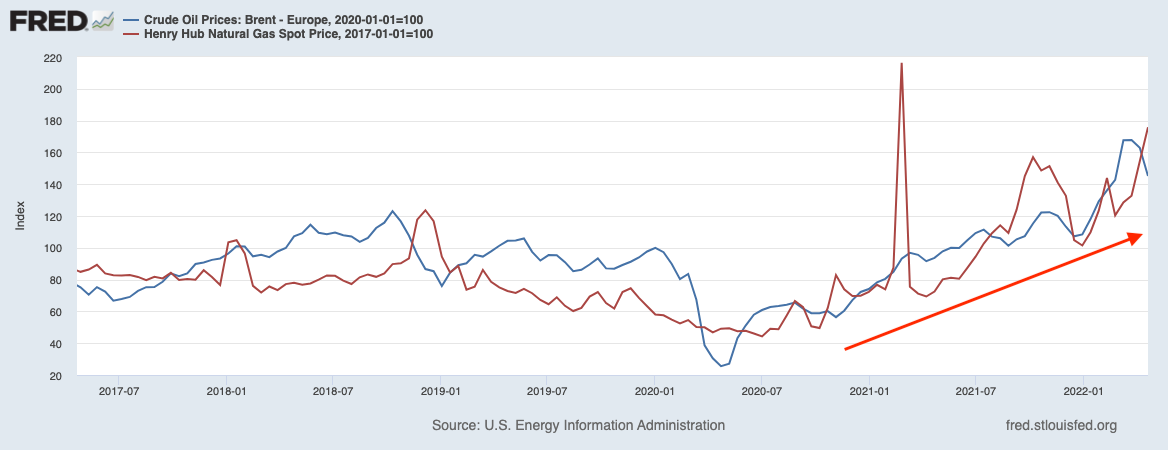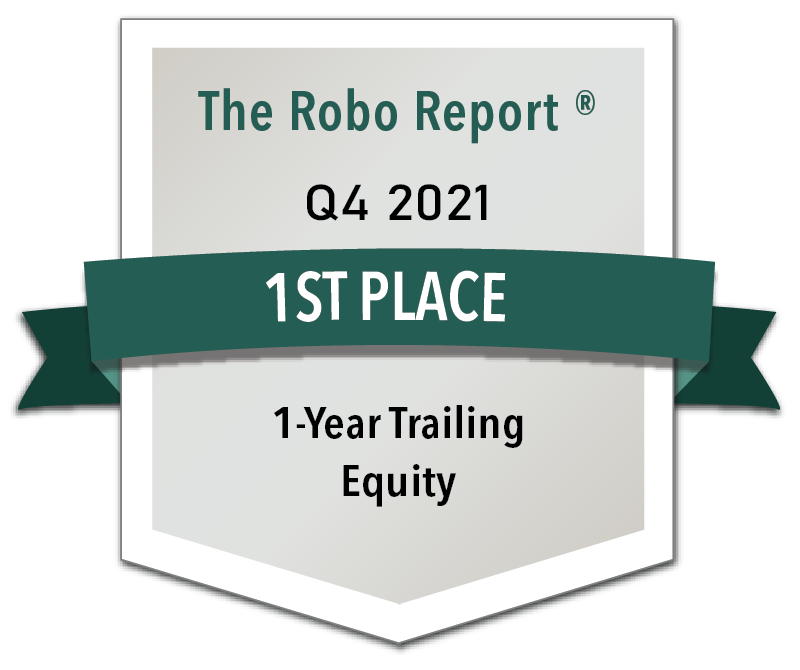How to Approach the Ever-Changing Energy Sector
April 25th, 2022 | Posted in InvestingHow Should Investors Approach the Ever-Changing Energy Sector?
The war in Ukraine has surfaced somewhat of an existential question for the energy sector. The world is slowly but surely attempting to transition to renewable energy sources but is still very reliant on oil, natural gas, and to a lesser extent, coal. World leaders have committed to cutting carbon dioxide emissions by 2050, but countries need more fossil fuels than ever today.1
So how will this war shape the energy mix for the world going forward?
In the short term, the answer to that question has been a paradox – developed countries like the U.S. and around Europe are trying to increase oil and natural gas supply, with the U.S. encouraging producers to ramp up production, and European countries seeking to diversify their import sources. Some European countries have also fired up dormant coal plants and have delayed plans to shutter nuclear facilities.
Rising prices of oil (blue line) and natural gas (red line) are complicating the issue:

Are your investments really as diversified as they should be?
“Don’t put all your eggs in one basket.” It’s a classic proverb and for good reasons. Diversifying your portfolio is one the most basic pieces of investing advice—but unfortunately, it’s also advice that too many investors ignore.
Zacks Advantage would like to help you ensure that your investments are properly diversified so that you can avoid the risks of over-concentration in any particular asset class. That’s why we’re offering our free guide, Is Your Investment Portfolio Actually Well-Diversified?3
Act now to get the basics of diversification, including:
- 4 myths of a diversified portfolio
- How to create a truly well-diversified portfolio
Learn more with our free guide, Is Your Investment Portfolio Actually Well-Diversified?.4
But as the developed world seeks more production of oil, natural gas, and even coal, this short-term demand runs counter to longer-term goals of reducing emissions and reliance on fossil fuels. The middle ground may be an approach that emphasizes increasing energy sources across the board in the near term, acknowledging that the transition to renewable energy sources should be pursued over time, not in a rapid shift.
This reality could boost prospects for the U.S. energy sector at large. Europe currently gets about 45% of its imported natural gas from Russia, and now has a goal of getting that number to 0%. The United States could be a substantial seller in this scenario – the Biden administration has said it would help deliver 15 billion cubic meters of liquified natural gas (LNG) to Europe in 2022, with a significant increase to 50 billion next year. 50 billion cubic meters of LNG would cover about 30% of what Europe imported from Russia in 2021.
The issue in the short term is that U.S. export capacity has reached its limit. What may be needed are guarantees that Europe would serve as a long-term buyer, which would spur LNG producers into action. At present, there are 21 LNG projects in the U.S. that are planned but not in production, and these projects combined could produce five times the amount of LNG that Europe wants by 2030. The U.S.’s share of global LNG production could nearly double in this scenario.
These short-term trends and rising demand for oil and natural gas are good for the fossil fuel industry, which makes the argument that traditional energy investments may be more desirable – on a relative basis – than investments in renewables. But the flip side to the argument is that the current reckoning in fossil fuel markets may drive countries and companies more rapidly into the development of renewable energy sources, as a means to diversify away from fossil fuels over time. Perhaps the most punitive action the world can take against Russia would be to shift away from fossil fuel consumption completely over time.
Indeed, as the European Union pivots its gas purchases to the U.S. and away from Russia, its total consumption of LNG is set to decline over time as it transitions to net zero. Some examples of this transition are already surfacing – Portugal and the Netherlands have recently announced new offshore wind investments, Belgium is delaying the closure of nuclear power plants, and France has taken other measures like increasing subsidies for electric heat pumps (versus gas heaters). The end result is that in the short-to-medium term, it seems that demand for any and all sources of energy is on the rise, which could bode well for a diversified investment approach to the sector.
Bottom Line for Investors
In the first quarter, as inflation soared and the war broke out, only two sectors posted positive performance: Energy and Utilities. Strong performance in Energy and the commodity markets was largely driven by sustained demand in the global economy combined with supply constraints tied to the war. The S&P GSCI, a benchmark tracking the prices of commodities futures from precious metals to livestock, rose +29% in Q1—the strongest quarterly performance in 32 years.
Going forward, even though the world is attempting to reduce emissions to zero while also reducing dependence on fossil fuels, it seems apparent in the near- to medium-term that demand for all energy sources is likely to move higher. From an investment perspective, it may mean not committing fully to either fossil fuel energy companies or renewable energy companies, but rather casting a wide, diversified net on a sector where demand is poised to move higher across the board in the next year.
The energy question is just one of the many reasons that investors can benefit over the long term by owning a diversified portfolio of stocks and/or ETFs. Positioning a portfolio across sector, style, size, and country will almost always provide exposure to the best performing areas of the market while minimizing the impact of the weak performing areas of the market. Volatility gets smoothed out over time, and an investor can earn attractive equity-like annualized returns. It doesn’t have to be more complicated than that, and investors don’t need a huge win in a single stock or IPO or SPAC to get there.
In fact, “diversify your portfolio” is one of the most basic pieces of investing advice. Sadly, in our experience, many investors still put all (or most) of their eggs in one basket.
At Zacks Advantage, we strive to help every investor properly allocate their assets. In fact, we’ve put together a helpful guide to help you understand the basics of portfolio diversification, including:
- 4 myths of a properly diversified portfolio
- Why the average investor’s returns trail almost every other investment category
- How to create a truly well-diversified portfolio
Get our free guide, Is Your Investment Portfolio Actually Well-Diversified?,3 to learn how to create a truly diversified portfolio.

1 Wall Street Journal. March 30, 2022.
2 Fred Economic Data. April 13, 2022
3 Zacks Investment Management may amend or rescind the A Better Way Forward: Actively Managing Passive Index Funds guide offer for any reason and at Zacks Investment Management’s discretion.
3 Zacks Investment Management may amend or rescind the A Better Way Forward: Actively Managing Passive Index Funds guide offer for any reason and at Zacks Investment Management’s discretion.
Past performance is no guarantee of future results. Inherent in any investment is the potential for loss
Zacks Advantage is a service offered by Zacks Investment Management, a wholly-owned subsidiary of Zacks Investment Research. Zacks Investment Management is an independent Registered Investment Advisory firm and acts as an investment manager for individuals and institutions. All material in presented on this page is for informational purposes only and no recommendation or advice is being given as to whether any investment or strategy is suitable for a particular investor. Nothing herein constitutes investment, legal, accounting or tax advice. The information contained herein has been obtained from sources believed to be reliable but we do not guarantee accuracy or completeness. Zacks Investment Management, Inc. is not engaged in rendering legal, tax, accounting or other professional services. Publication and distribution of this article is not intended to create, and the information contained herein does not constitute, an attorney- client relationship. Do not act or rely upon the information and advice given in this publication without seeking the services of competent and professional legal, tax, or accounting counsel.

